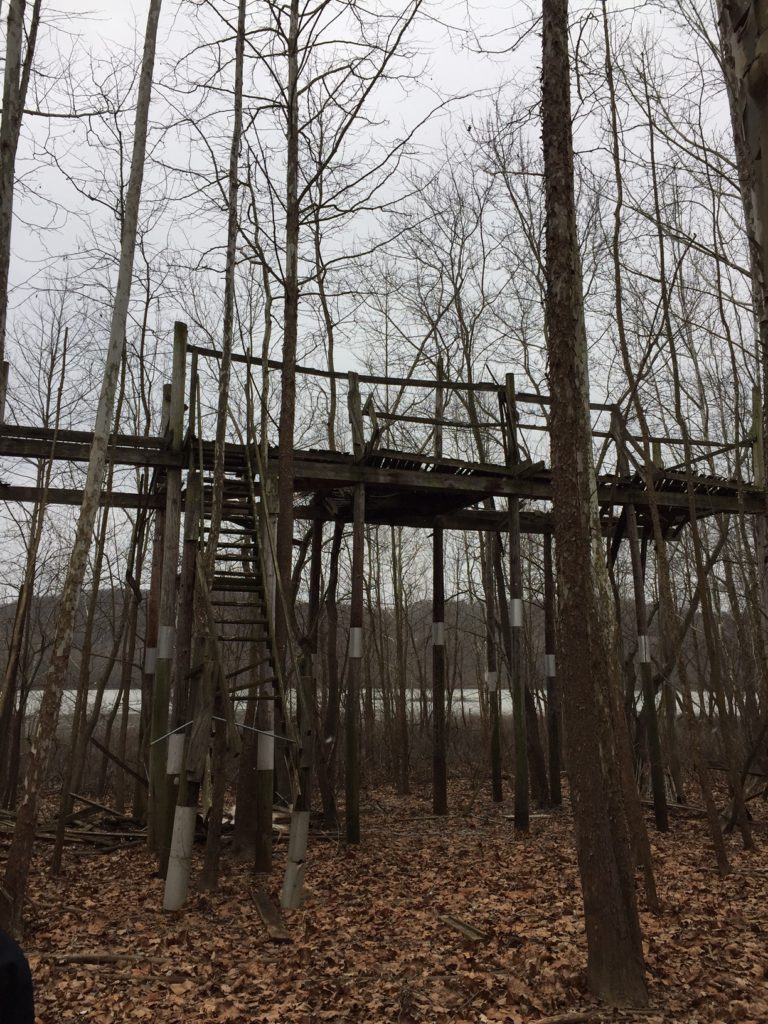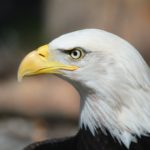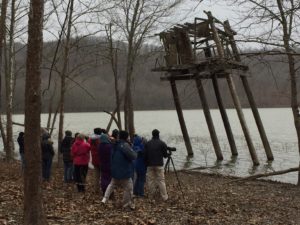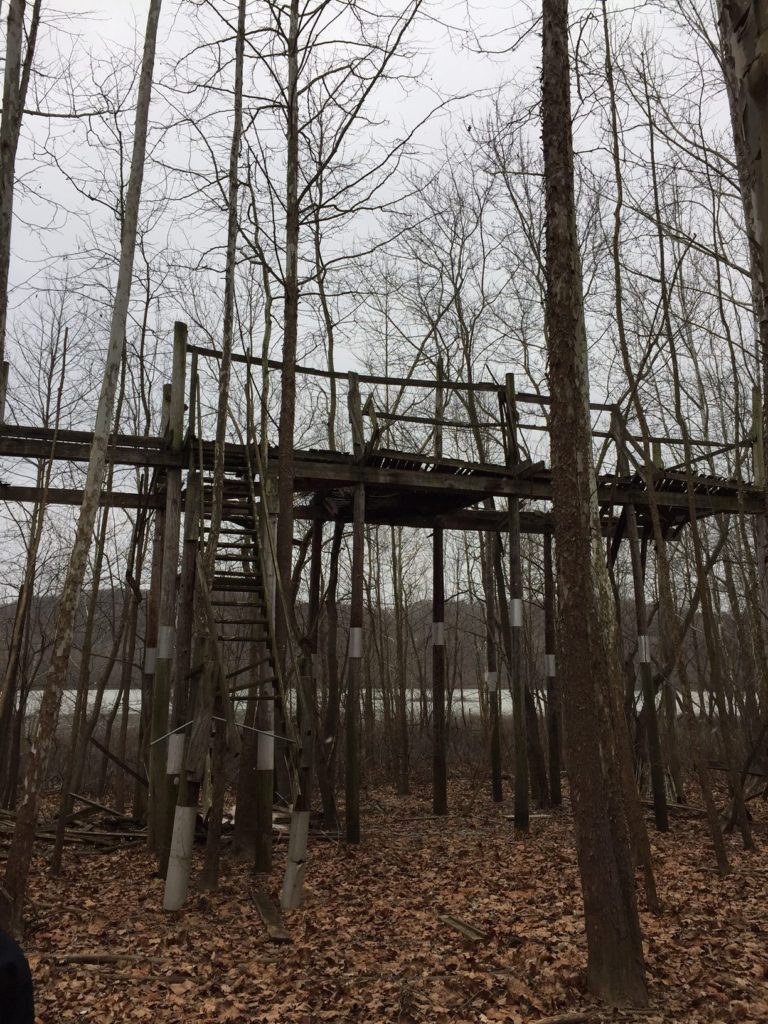

Bloomington, IN–The sky spit bits of snow as temperatures in the 20s made me pull up my hood over an insulated hat. Other hikers were wearing face masks and balaclavas. I decided to take wool mittens that could pull down to expose my fingers for photos, slung a pair of binoculars over my neck, and tightened the laces on my insulated high-top hiking boots. I remembered silk underwear and a “smoke ring” funnel scarf made of ox musk yarn from Alaska. But without a backpack, I had to choose between a spotting scope and a hiking pole as our highlight hike during Eagles Over Monroe weekend. Next time the backpack would be another staple in the car trunk, along with extra mittens, hats, gloves, and scarves.
Our group of 20 slowly snaked along an overgrown field, headed to the hacking tower, built at Lake Monroe in 1985 to reintroduce the bald eagle to Indiana. Jill Vance, interpretative naturalist at Lake Monroe, led the group. We needed her for directions and details, or course, but also because the public isn’t allowed here from October through April because it is a waterfowl resting area.
Soon we were stumbling over sticks, brushing up against brambles, even hopping over a small creek. Unfortunately, one hiker slipped and fell into the water, mud covering his entire leg and coat. I worried he might get hypothermia in the cold weather, but he was determined to see the hacking tower.
When eagles first learn to fly–or hack–they develop a bond to the location. Eagles return to their hacking site to build their own nests as parents, when they’re about 4-5 years old. The hacking tower built in 1985 on the North Fork of Stillwater Marsh on Lake Monroe. This site was chosen for a reintroduction program due to the close proximity to water, so the birds could fish, as well as stands of trees for building nests. The tower accommodated 5-6 week old eaglets brought from Wisconsin and the Tongass National Forest in Alaska. Using two locations and the average eaglet hacking at 13 weeks, the program could hosted two hacking groups per year through 1989. By then, eagles were coming back to Lake Monroe to nest, and the program was deemed a success. The tower was left to fall into disrepair.
We looked at photos Vance brought, showing the construction of the tower, when telephone poles donated by Southern Indiana Bell Telephone were pounded into the ground near the water. The poles were wrapped in metal to keep predators from climbing up the poles to get at the chicks, and an old staircase stopped several feel above the ground for the same reason. Vance said the biologists would bring a stepladder to get the first tower stairs.
As the eaglets fledge, they often have a lot of false starts, Vance explained, spiraling down to the ground. One eaglet seemed to do a lot of fluttering down without flying back up. A biologist would pick up the bird and take it up the stairs back to the nest. About the fifth time it did this, the bird didn’t wait for the biologist to take it back upstairs–it went up the stairs by itself.

We hiked a little farther down the overgrown road to a tower leaning precariously in the water. This was where the biologists hid and could observe the birds. As we looked at it, an eagle soared overhead. Not far across the marsh, a bald eagle’s nest was visible in the trees. Eagle nests are about five feet across, so they can be easy to spot.
This was one of 12-14 eagles’ nests that are scattered around the edge of the lake. The 1985 program goal was to achieve 20 nests in the state of Indiana by 2020. There are now more than 200 throughout the state.
Vance also pointed out a telephone pole far out in the water. These were brought in by helicopter and dropped into the lakebed to serve as perching poles for the eagles. This is one that still remains, and eagles can be spotted there.
As we stood gazing over the water, the bald eagle returned, swooping into the nest and remained. It was easily visible by binoculars, and some hikers offered the use of their scopes to see the nesting eagle close up. My heart fluttered a bit. Some things are worth the wait.
